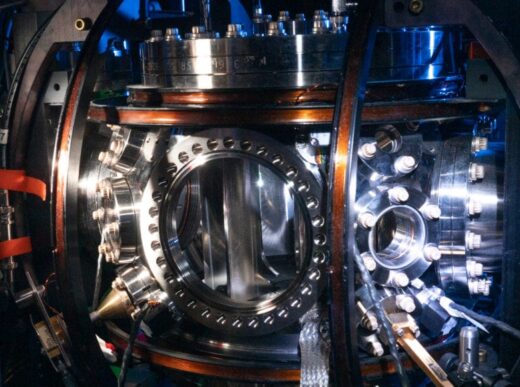In a narrative that seems plucked from the pages of science fiction, a mesmerizing feat has emerged from the collaboration between neuroscience and music: renowned Pink Floyd song “Another Brick in the Wall” has been extracted from the depths of individuals’ brains. Employing an amalgamation of electrodes, computer models, and brain scans, scientists have embarked on an extraordinary journey, delving into the realm of brain activity to decipher and recreate this iconic melody.
This pioneering endeavor marks a substantial leap, pushing the boundaries of our understanding of brain function and its intersection with the auditory world. While previous studies have harnessed similar methods to decode linguistic expressions and even entire thought sequences from neural activity, the present study, published on August 15 in PLOS Biology, ushers music into the forefront. This groundbreaking research unveils the intriguing possibility of decoding songs from neural signals and unravels the intricate nuances of brain regions that capture an array of acoustic components. Beyond its immediate implications, this discovery holds the potential to revolutionize communication devices for individuals grappling with paralysis or speech limitations.
A Harmonious Fusion of Methodology and Music
The mastermind behind this scientific symphony is Ludovic Bellier, a neuroscientist from the University of California, Berkeley, who led the investigation alongside his colleagues. In a bid to decode “Another Brick in the Wall,” the researchers embarked on a unique journey, delving into the minds of 29 epilepsy patients with implanted electrodes. Within the hospital’s confines, as these individuals underwent monitoring for their disorder, they immersed themselves in the resounding rhythms of the 1979 rock anthem.
The neurons within the auditory precincts of their brains responded fervently to the auditory stimulus, and the electrodes wielded their power, not only capturing neural signals intertwined with lyrics, but also encapsulating the essence of rhythm, harmony, and other musical facets. Armed with this neural orchestra, the scientists meticulously crafted a computer model, orchestrating the reconstruction of auditory landscapes from the intricate dance of brain activity. Astonishingly, the computer-generated sounds bore a striking resemblance to the original song, culminating in an achievement that reverberates as a testament to the fusion of science and artistry.
Unveiling the Symphony of Brain Function
Robert Zatorre, a neuroscientist at McGill University, Montreal, lauds this achievement as a “real tour de force.” Directly probing the neural activities grants unparalleled insight into the intricate patterns woven by neurons. The research also illuminates the specific brain regions that orchestrate the intricate tapestry of musical experience. For instance, a segment within the superior temporal gyrus (STG), nestled within the cerebral expanse, exhibited intensified activity at the emergence of distinct auditory components. The STG, stationed at the lower middle regions of the brain’s two hemispheres, emerged as a pivotal conductor, enhancing its vibrancy at the onset of crucial elements like guitar notes.
Delving further into this cerebral symphony, the study revealed that the right side of the brain, particularly the STG, played a pivotal role in unraveling the melodic intricacies. Intriguingly, the left side of the brain did not wield the same significance in this context. The study underscored the centrality of this neural conductor, as the removal of information pertaining to this region within the computer model led to a tangible decrease in the accuracy of song reconstruction.
Unlocking the Heartbeat of Music in the Brain
Ludovic Bellier, the visionary orchestrating this convergence of neuroscience and music, eloquently captures the essence of this exploration. For him, music transcends mere auditory stimuli; it forms an integral facet of the human experience, a universal language uniting individuals across diverse cultural landscapes. In his words, “Understanding how the brain processes music can really tell us about human nature. You can go to a country and not understand the language, but be able to enjoy the music.”
Yet, this expedition into the inner sanctums of musical perception poses its challenges. The elusive brain regions that underpin musical experiences often resist easy access, necessitating invasive methodologies for exploration. As Zatorre aptly questions, the broader applicability of the computer model remains a tantalizing enigma. Can it extend its prowess to decode an array of sounds, from a barking dog to a ringing phone?
The Resounding Future: Echoes of Innovation and Hope
The culmination of this extraordinary venture envisages a realm where natural sounds seamlessly emerge from neural symphonies, transcending the boundaries of music. In the immediate horizon, this fusion of neuroscience and music promises to inject the musical elements of speech, such as pitch and timbre, into the realm of brain-computer devices. Such endeavors hold the potential to empower individuals grappling with brain lesions, paralysis, or other conditions, revolutionizing their ability to communicate and connect.
In the ever-evolving narrative of science and innovation, the harmony between music and neuroscience rings with promise. The convergence of these seemingly disparate realms harmonizes into a resonant melody that not only ignites scientific curiosity but also kindles hope for a world where the melodies of the mind find expression and connection.















